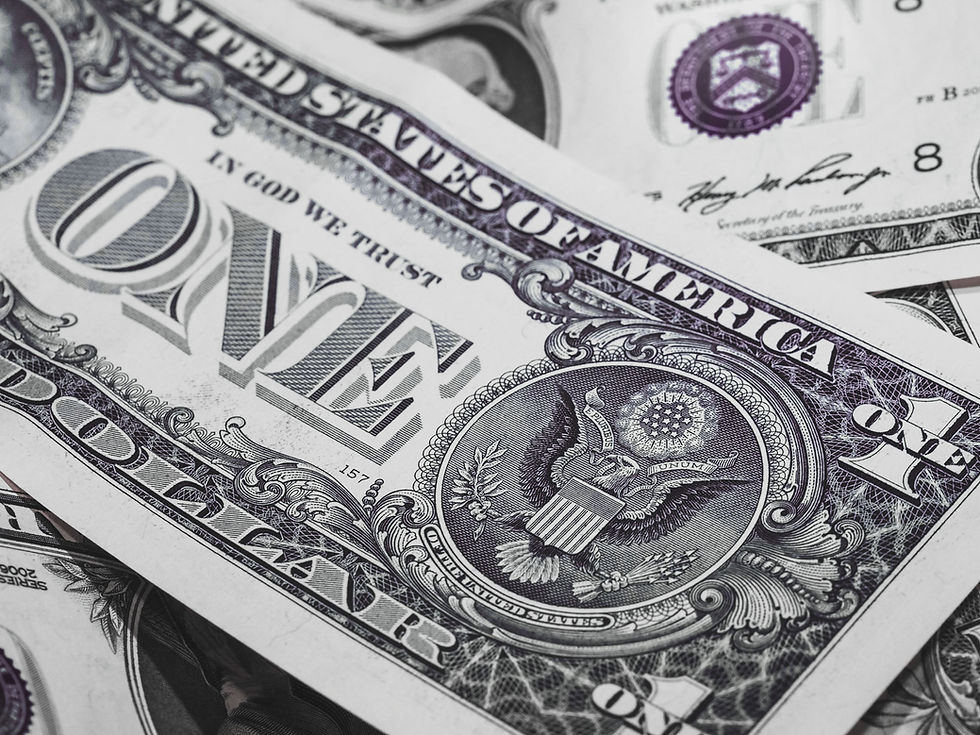The Economic Stimulus and Student Loan Forgiveness
- jdpeterson72
- Jul 29, 2021
- 3 min read

When I enrolled in Law School in 2016, I had to answer the question that many families are faced with today – how am I going to pay for this? As a non-traditional student, I had the benefit of being in the workforce for several years while making a decent salary and accumulating a nice savings. But Law School was not necessarily a financial goal of mine. In my case, it was nearly a spur of the moment decision, and despite the savings I had accumulated, paying for Law School was sure to wipe out all of my savings. I decided to compromise and go to school part-time at nights, while maintaining my full-time job. Not all families or individuals have this “luxury” though, and borrowing for college has become a big money business that has left many Americans drowning in debt.
According to a 2020 household debt study by Nerdwallet.com[1] [DP1] the average US household with student debt owes $57,520. An average sum that ranges from $28,950 in bachelor’s degree debt[2] to $145,500 for law school debt.[3] An obvious concern for folks holding this debt is how are they going to re-pay? For many, a re-payment plan comes at the expense of savings, which might postpone the acquisition of a car, a home, or even retirement. The size of US student loan debt has grown so much over the years that several members of Congress have spoken up and advocated for student loan forgiveness. In fact, the Student Loan Tax Relief Act was passed as a provision of the American Rescue Plan,[4] a nearly $2 trillion rescue package designed to facilitate recovery from the economic and health effects of the COVID-19 pandemic.[5]
So what does the Student Loan Tax Relief Act (“the Act”) provide? Despite the name, it does not provide for forgiveness of student loans. Instead, the Act provides for tax relief on any student loan debt that happens to be forgiven. Ordinarily, any debt that is forgiven is taxable, and treated as ordinary income. The rationale for this is if you have debt that has been forgiven, then you do not have an expense you would have ordinarily had. And because you no longer have that debt, you have increased your wealth. Section 61 of the Internal Revenue Code (IRC) defines gross income as “all income from whatever source derived”,[6] including discharges from debt. So the real benefit of the Act is that any student loan debt forgiven or canceled between 2021 and 2025 will be tax free.
There are several programs available to debtors that could lead to student debt forgiveness. Bankrate.com provides a nice summary of the more popular debt forgiveness programs,[7] and differentiates between debt forgiveness and debt cancellation. The article outlines several programs for forgiveness that may include the debtor participating in a particular public service for a defined period of time, or teachers who serve in low-income school districts, as well as military service AmeriCorps programs. The Bankrate article differentiates forgiveness as the benefit of participating in a service program, versus debt cancellation, which is more due to hardship.
While I encourage you to read the Bankrate the article, it would still be to your benefit to speak with a financial advisor or tax advisor regarding your situation. Whether you are in the savings stage and trying to figure out how to reach your saving for education goals, or you are post education and trying to figure out how to pay-off or discharge your debt, we can help you devise a plan that fits your lifestyle and goals. Contact the Law Office of Doug Peterson to schedule a free initial consultation to see how we can help you set and achieve appropriate goals.
[1] Anna Helhoski, Ryan Lane, Student Loan Debt Statistics: 2021, Nerdwallet (Jun. 14, 2021), www.nerdwallet.com/article/loans/student-loans/student-loan-debt. [2] Id. [3] Id. [4] Hanneh Gundersen, Biden’s Stimulus Package Makes Student Loan Forgiveness Tax-Free, Bankrate (Mar. 10, 2021), www.bankrate.com/loans/student-loans/stimulus-package-student-loan-forgiveness/. [5] Erik Haagensen, American Rescue Plan (Biden’s $1.9 Trillion Stimulus Package), Investopedia (May 24, 2021), www.investopedia.com/american-rescue-plan-definition-5095694. [6] Internal Revenue Code, 26 U.S.C. §61 (2020). [7] Holly D. Johnson, How to Qualify for Student Loan Forgiveness Programs, Bankrate (Nov. 17, 2020), www.bankrate.com/loans/student-loans/qualify-for-student-loan-forgiveness-programs/.
[DP1]For a blog posting like this, I don’t know if makes sense to have footnotes like I have included. It might make more sense to just have hyper-links to the articles I’ve cited. I used a lot of information, so needed to make sure I cited all my sources. But I also think several of the sources may be beneficial to any readers, so a hyperlink may make most sense.
Thoughts?


Comments